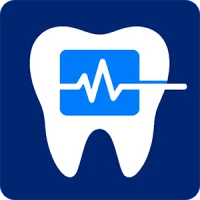
Dental Blog
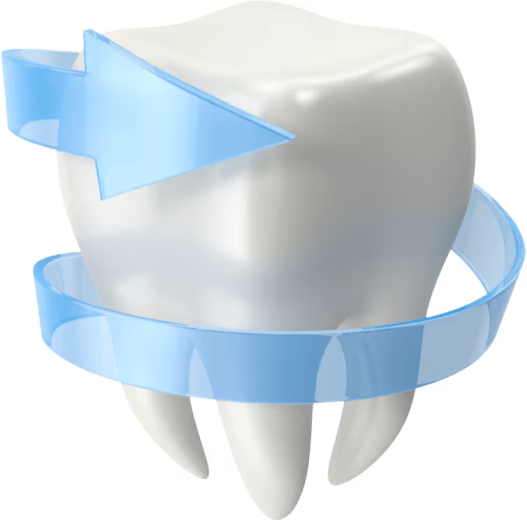

Resources for Dentists
Dive deep into helpful guides and in-depth information about:

Your Resource for Dentistry Insights
Sedation dentistry is evolving. Regulations change, compliance requirements grow, and practices need tools to stay ahead. The Sedate Dentistry Blog is here to help you learn, adapt, and succeed with resources built for dentists, oral surgeons, and office managers.

Explore Topics That Matter

Sedation Dentistry
Learn about sedation dentistry's best practices, compliance tips, and case studies.
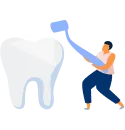
Patient Vitals Monitoring
Device integrations, patient monitoring, and technology insights.

Patient Forms & Experience
Intake forms, digital consent, and patient-focused workflows and user experience.

Dental Practice Growth
Grow your dental practice with in depth guides, tutorials, and software reviews.
Recent Guides for Dentists

Oral Surgery Group Case Study: IV Sedation Documentation
A five-surgeon oral surgery group rebuilt IV sedation documentation around live charting, device integrations, and objective discharge. In 30 days they eliminated late-entry edits, captured complete dose entries with running totals, and produced audit-ready timelines in under two minutes—without adding clicks in the operatory.
Table of Contents
Oral Surgery Group Case Study: IV Sedation Documentation
The baseline problem was pace without a synchronized record
The objective was a one-screen story from induction to discharge
The core move was putting standards inside the live chart
The IV sedation template matched what surgeons say out loud
Device integrations removed double-entry and added trust
Roles turned speed into clarity under pressure
The eight-field dose script ended ambiguity immediately
Oral surgery specifics: what the template added beyond general dentistry
The month-one results: calmer rooms and audit-ready timelines
Before vs after: what changed during a typical third-molar IV case
The flow note pattern that finished the chart in two minutes
Training that stuck because it lived in the chart
Objections and how the surgeons resolved them
Quantifying the switch for partners and finance
Oral surgery adds speed, stimulation spikes, and fluid shifts to the typical sedation day. Documentation must keep pace with injections, surgical events, and airway maneuvers while remaining crystal clear for review. This case study shows how one multi-operatory oral surgery group standardized IV sedation charting using Sedation visit record software, IV sedation charting software, and Patient Vitals Monitor Integrations. You’ll see the template they built, the roles and prompts that made the record complete in real time, and the results they measured in the first month.
The baseline problem was pace without a synchronized record
The group delivered strong clinical care but documentation lagged during busy blocks. Concentration (mg/mL) and route were sometimes omitted on dose entries, nitrous (when used for anxiolysis) was a checkbox, and “extra entries” for stimulation spikes were inconsistent. Late-day summaries tried to reconstruct events, but timelines blurred around injections, flap reflection, and airway maneuvers.
The objective was a one-screen story from induction to discharge
Leadership wanted the record to read exactly like the room felt: baseline ×2, induction notes, interval vitals with extra entries when stimulation changed, medication entries with concentration/route/time/indication/response/running totals, a compact nitrous block when used, and objective discharge criteria. The team also needed clearer event and reversal narratives that could be scanned in seconds by any reviewer.
The core move was putting standards inside the live chart
Standards stuck because they lived where people clicked. Intake, vitals, meds, nitrous, events, fluids, and discharge went into digital sedation visit records. A minute-by-minute timeline with interval prompts ran in minute‑by‑minute IV charting. Policies, consent language, and discharge criteria lived with version control in Dental sedation compliance.
The IV sedation template matched what surgeons say out loud
Templates got faster when they mirrored the spoken workflow. The group rebuilt four areas so the Recorder could chart at surgical speed.
● Medication block with required fields for medication name, concentration (mg/mL), route, exact dose, time, indication, immediate response, and running totals.
● Nitrous block (for anxiolysis cases) capturing start time, titration range, peak percentage and duration at peak, and O₂ flush—charting gas like a medication, not a checkbox.
● Event timeline pattern (observation → action → dose → response) so airway maneuvers, infiltration spikes, or bleeding management read like a story with times.
● Recovery and discharge checklist with objective criteria (final vitals, orientation, ambulation with minimal assistance, nausea/pain control, oral fluids tolerated, escort briefed when applicable) enforced before sign-off.
Device integrations removed double-entry and added trust
Vitals streamed from monitors to the timeline so the Recorder focused on dose and event clarity. The group connected SpO₂, HR, NIBP, and ETCO₂ via Patient Vitals Monitor Integrations and taught Monitor Techs to validate pleth waveform quality and cuff size before induction. ETCO₂ trends during airway repositioning were captured automatically, which made post-event review obvious.
Roles turned speed into clarity under pressure
Busy oral surgery rooms got calmer when every role owned a part of the record.
● Sedation Lead titrated and made decisions.
● Monitor Tech set alarms and called vitals at the timer cadence (5 minutes for IV) and during “spike moments.”
● Recorder typed live, read back every dose using the eight-field script, logged “extra entries” when stimulation changed, and summarized running totals during handoffs.
● Room Support staged suction/oxygen, confirmed reversal expirations, and helped with sensor fixes to keep signals clean.
The eight-field dose script ended ambiguity immediately
Clarity came from repetition. The Recorder spoke and typed the exact same sentence for every dose: “Medication name and concentration (mg/mL), route, exact dose, time, indication, response, running total.” Example: “Midazolam 1 mg/mL, IV push, 1.0 mg at 08:42 for anxiolysis. Calmer; RR 14; SpO₂ 98%. Total 1.0 mg.” For quick onboarding refreshers, staff reviewed document sedation doses accurately (future).
Oral surgery specifics: what the template added beyond general dentistry
IV oral surgery cases have unique documentation needs. The team added small but powerful fields that made reviews simple.
● Local anesthetic totals with epinephrine concentration, linked to time of infiltration and stimulation spikes.
● Airway maneuvers (chin lift, jaw thrust, OPA/NPA) logged as events with pre/post ETCO₂ and SpO₂.
● IV site checks and fluids: site integrity, infiltration checks, total fluids administered.
● Surgical milestones (incision, flap reflection, bone removal, suture) logged as “extra entries” that explain vital sign changes.
● Analgesic and antiemetic dosing aligned to events (e.g., ketorolac or ondansetron) using the same eight-field script.
The month-one results: calmer rooms and audit-ready timelines
Numbers moved fast once standards lived in the chart. The group tracked five KPIs and compared them to the previous month.
Before vs after: what changed during a typical third-molar IV case
Seeing one case side-by-side helped surgeons trust the system.
The flow note pattern that finished the chart in two minutes
The final summary pulled straight from the timeline:
● 08:31 Baseline vitals ×2 recorded.
● 08:37 Midazolam 1 mg IV for anxiolysis; calmer; RR 14; SpO₂ 98%. Total 1 mg.
● 08:44 Local infiltration 2% lidocaine with 1:100,000 epi; “extra entry” added for stimulation.
● 08:46 Jaw thrust with O₂ 10 L/min after snoring; ETCO₂ 52→40; SpO₂ 94→99% by 08:48.
● 09:12 N₂O 20–35%; peak 35% 09:17–09:33; O₂ 100% ×5 min at end.
● 09:36 Recovery vitals stable; oriented ×3; ambulates with minimal assistance; discharge per clinician.
Training that stuck because it lived in the chart
The group didn’t add binders; they added micro-drills inside the system. Two-minute dose read-backs at huddle, five-minute nitrous logging practice, and a short reversal scenario using the event timeline pattern. The cadence kept skills fresh without blocking production. For a broader implementation map, the team shared Sedation workflow that scales (future) with new hires.
Objections and how the surgeons resolved them
“Digital will slow extractions.” The speed gain came from less rework; notes were complete the first time. “We don’t use nitrous often.” When used, a single block captured all five details in seconds. “ETCO₂ isn’t always clean.” The Monitor Tech validated pleth/cuff and sensor position up front; artifacts stopped polluting the record.
Quantifying the switch for partners and finance
Leaders compared time saved and rework avoided using Sedate Dentistry vs. paper records and mapped costs with Plans & Pricing. The model showed fewer late-night edits, faster audit packet assembly, and clearer payer responses.
Where this fits in your case-study library
If compliance outcomes are your pain, compare Audit-Ready in Seconds: A Compliance Success Story. If you want a monitoring-first lens, read Case Study: Improving Sedation Patient Safety With Automated Monitoring. For a general practice migration tale, see Case Study: Transitioning a Mid-Sized Practice From Xchart to Sedate Dentistry.
Bottom line
Oral surgery demands speed without sacrificing clarity. When the record lives on one screen, device feeds stream vitals, timers cue behavior, dose entries follow an eight-field script, and discharge is objective, your charts tell the clinical story without after-hours guesswork. The result is calmer rooms, safer care, and audit-ready documentation that writes itself.
Next Steps
Book a Free Demo to see how Sedate Dentistry’s Digital Sedation Visit Records Software can streamline and replace paper sedation visit records—saving time, money, and increasing compliance while reducing liability and improving the quality of patient records.
Ready to modernize your sedation documentation? Book a Free Demo now!

Stay Ahead of the Curve
Benefits of Following Our Blog
Learn compliance best practices.
Discover new sedation software features.
Get expert tips for improving patient care.
See how practices are switching from paper or competitors like Xchart.

Learn More About Sedate Dentistry?
Request a software demo today. See how we can digitalize your sedation visit records.
Simple Pricing, No Hidden Fees
No limits on Procedures or Patients (additional fees for additional offices and dentists)
Testimonials
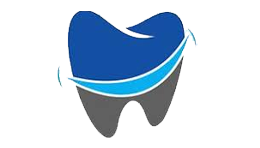
SmileRight Dentistry
Here's Sedate Dentistry Software in a nutshell. Time Saver. Money Saver. Easy to use. Amazing support. End of story.
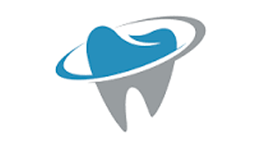
DentalClean
We learned about Sedate Dentistry from one of their other sister companies Edental. We switched from Xchart and this app works great.
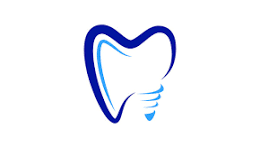
Metro Dentistry
The team at Sedate Dentistry has been amazing, especially Josh who helped integrate into our Edan X10. Much better than Xchart and a fraction of the price.
Contact Us
Contact Us
3165 West 4700 South, Suite A, Taylorsville Utah 84129



















